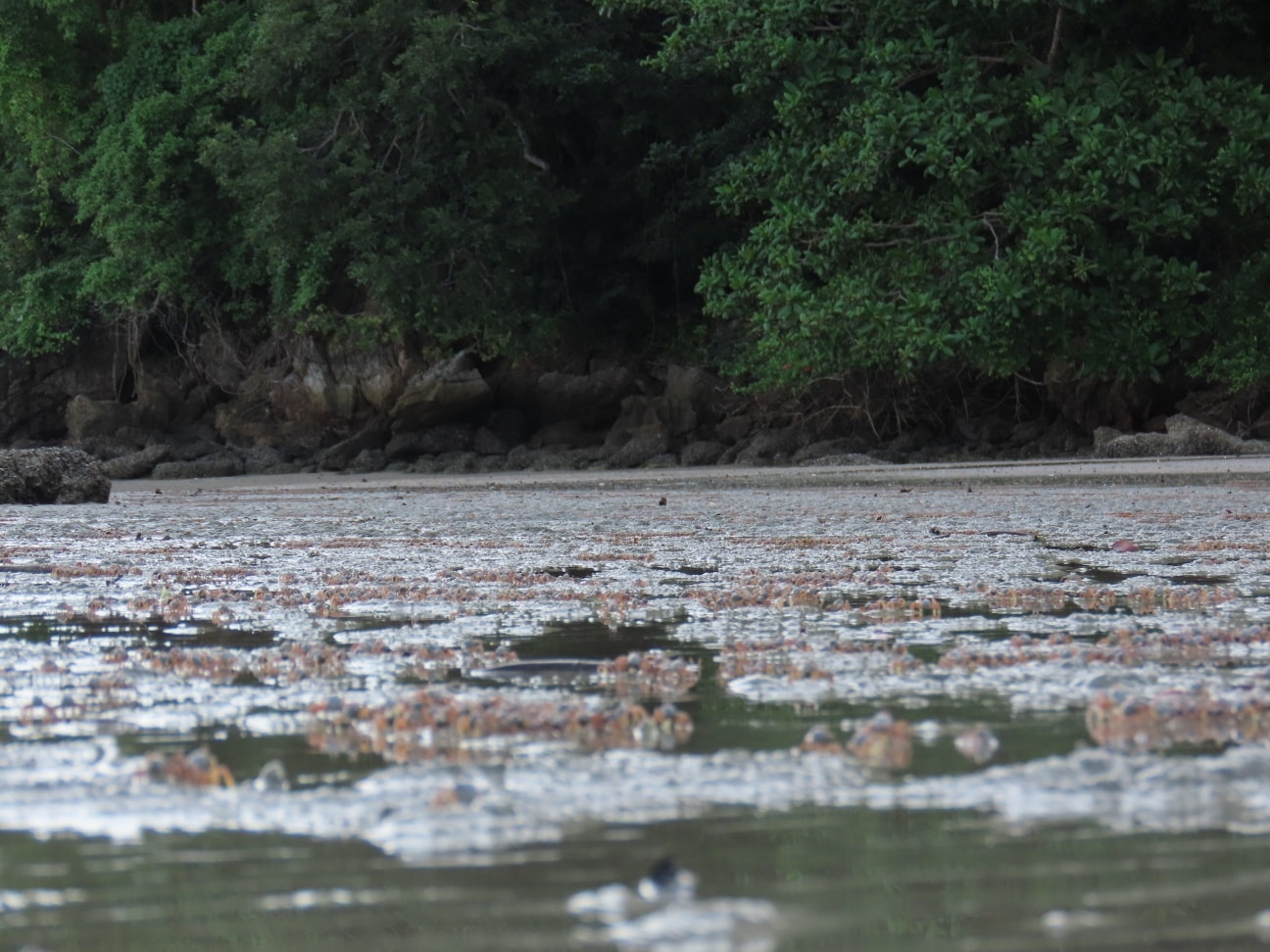Thousands of soldier crabs emerged along the shores of Hat Chao Mai National Park in Trang province this week, drawing crowds of curious tourists to witness the striking natural event. The synchronized appearance, which occurs during low tide, is seen as a sign of the area’s healthy and biodiverse coastal ecosystem.

The crabs were spotted in large numbers at Khao Bae Na beach, a site within the park, where they appeared to move in coordinated formations across the sand. This occurrence, while visually remarkable, is a common phenomenon during tidal shifts and has been observed at various beaches in the area, including Chang Lang, Pak Meng, Yong Ling, Yao, and Wedding Beach.
Soldier crabs, small burrowing crustaceans, typically live in tiny holes along the beach. As the tide recedes, they emerge in large groups to feed. Their movement, often compared to a miniature military parade, captivates onlookers. Each crab maintains its own burrow, and any intruder is swiftly ejected, highlighting their territorial instincts. When sensing danger or rising tides, the crabs quickly retreat and seal their burrows with sand—a survival behavior rooted in instinct.
These crabs play a crucial role in the ecosystem. Feeding primarily on decaying plant and animal matter as well as microscopic plankton mixed in the sand, they help clean and aerate the shoreline. Their rapid filtering behavior contributes to the overall health of the beach habitat.
The appearance of large numbers of soldier crabs, particularly during lunar days from the 11th waxing to the 3rd waning, is typical for the area and not considered an unusual or warning sign. Rather, it underscores the well-preserved natural state of Hat Chao Mai National Park.
Officials from the park, including its head, have affirmed that such occurrences are regular and point to the ecological richness of the site. Visitors and nature photographers continue to be drawn to the phenomenon, especially during the early hours when low tides reveal the full extent of the crab activity.



